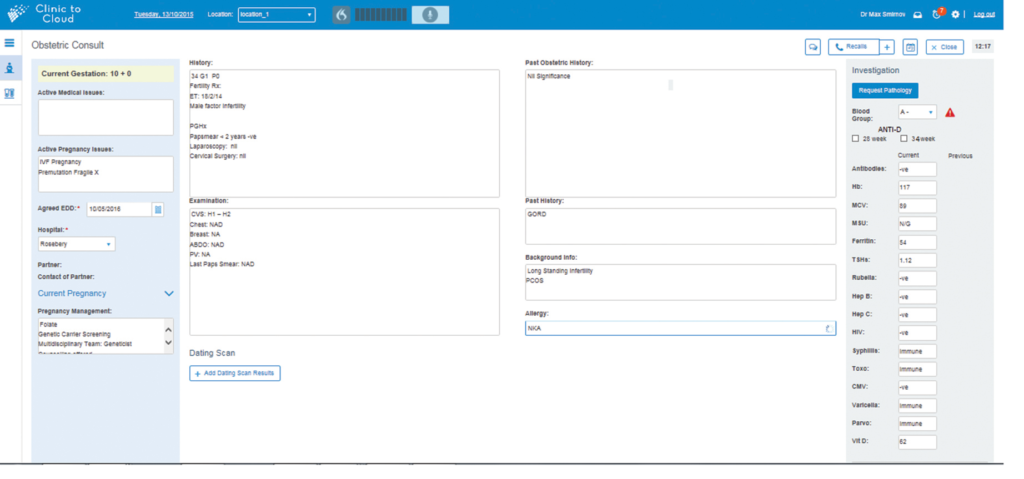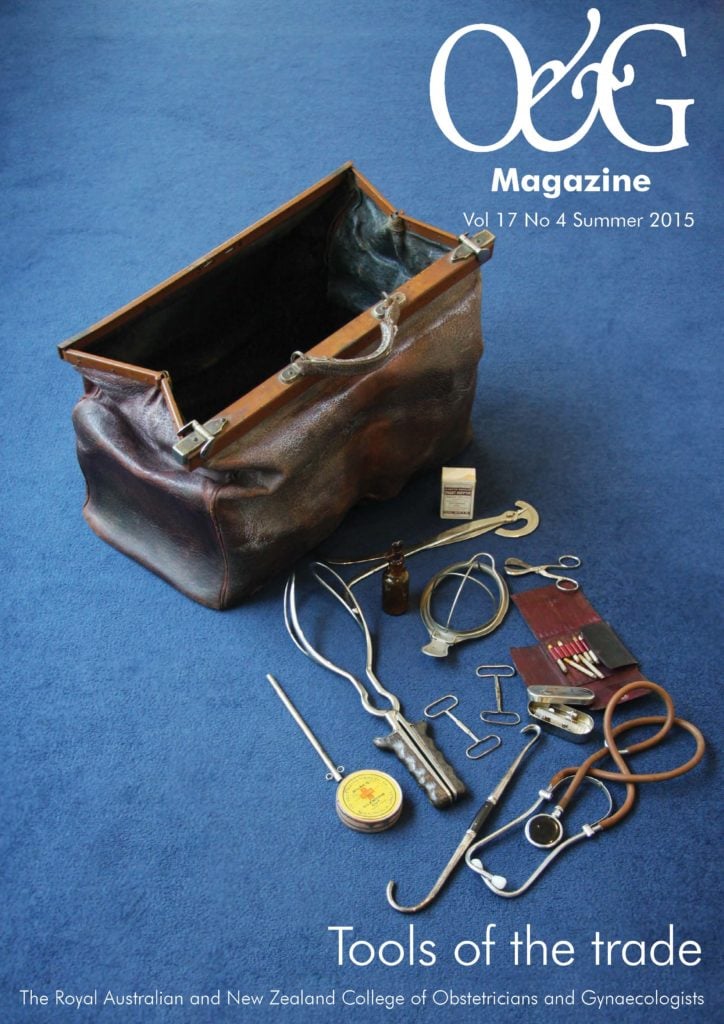Patients and clinicians alike joke about checking with ‘Dr Google’, but with internet access via smartphone and other handheld devices ubiquitous, information and communication technology (ICT) is having a profound affect on how medicine is practised.
A night in the life of a clinician
It’s 1am and you get a page from the call service that says ‘please call Mrs Jones’ and gives a mobile number. In a daze you think: ‘Mrs Jones…mmmmm is that the Mrs Jones who is a 39-year-old primip at term with a background history of valvular heart disease or the Mrs Jones who is 20 weeks with no significant medical history?’ Or, perhaps, ‘I don’t recall a Mrs Jones at all.’ The ability to quickly access patient information in a concise format that gives the full clinical picture is paramount.
Electronic health records
All GPs now use medical software for their records. This is not new technology; however, what some hospitals and providers have recently begun including are electronic versions of pregnancy paper records. Many women now carry a paper copy and a link to an electronic copy. Some hospitals, such as the Mater in Brisbane, have an electronic portal for patients and providers to share.
Mater Shared Electronic Health Record (EHR) is an electronic alternative to the paper hand-held Pregnancy Health Record or blue book. It allows pregnant women, GPs and private obstetricians to collaborate with Mater Mothers’ Hospitals in a safe online environment on a woman’s maternity information. With real-time exchange of information, Mater Shared EHR gives quick, secure access to patients and providers alike in order to improve patient care. Mater Shared EHR is only available for maternity care at this time.
Apps for pregnancy
There are many pregnancy apps available for women to use. Most are focused on the pregnancy journey and birth plans. Apps such as Pregnancy +, developed by the UK’s National Health Service (NHS), provide a combination of maternal and medical information. The apps feature kick and movement charts as well as growth plans and weights. Others, such as Baby Bump Pro, provide portals to Twitter and other social media feeds for mothers to share during their pregnancy.
Technology for new parents
- Pacif-i. It looks just like a normal dummy, but the Pacif-i smart pacifier measures the baby’s temperature so parents can better manage their child’s health.
- Mimo Onesie. Needless to say, this is the most expensive clothes parents will buy for a baby. While the organic cotton is nice, what makes this outfit even cooler is that it monitors pulse, breathing rate, heart rate and even body position. Then it sends all of that information to the parents’ phones, meaning they can always rest easy that their baby is doing okay.
- Nuvo Ritmo Pregnancy Sound System. For parents who want their baby to know all about Mozart and Beethoven (or Rihanna and Prince) before they are even born. The sound system takes the form of a belt with in-built speakers that spread the music across several points across the belly, ensuring that volume is not overly concentrated in any one place. It allows mothers to play music to their unborn child through their very own sound system.
Facebook and Twitter
There are many Facebook pages devoted to pregnancy and antenatal care. Pages such as RANZCOG, RCOG and OBGYN.net are supported by colleges and organisations to provide information for women and providers of obstetric care. There are also closed sites available for GPs where providers can discuss cases and ask colleagues for advice, such as GP Down Under. These pages require permission to access, usually showing evidence of registration and so forth.
Twitter has become the go-to place for current discussion and education. There are many tweets (messages posted to the site) regarding best practice, evidence base and future treatments. Twitter hashtags such as FOAM (free online access medicine) have regular up-to-date conversations regarding medical education and now #FOAMog and many other sites (links via the website bitsandbumps.org) provide FOAM for the specialty. There are even GP obstetrician online groups being developed.
Tools and toys
There seems to be a paucity of new technology related to office obstetrics. Ultrasound is getting smaller and more hand held and there are slow improvements in cardiotocography monitoring, but we are still waiting for video specula, digital cervical Dilantin monitors and membrane rupture apps (or maybe not).
Head into the cloud
Cloud technology is emerging as the most secure and cost-effective way to do business for corporations small to large. There are undeniably advantages of using the cloud over owning your own server, including reduced operating expenses, a more secure datacentre and the ensured backup processes. However, unfortunately, medical software hasn’t kept pace with these advances.
In the past, one of the authors had the good fortune to design and commercialise a medical rostering software package. The product was designed to be intuitive, automated (where feasible) and put in place safeguards to prevent unsafe work practices. As obstetricians and gynaecologists, we need medical software available on our desktops and smart phones that allows us unscheduled access to patient clinical data; especially in the birth suite.
The ideal medical software would make medical practice more efficient, safe, paperless, synchronise with accounting software, provide business analytics, generate audits easily and, most importantly, provide a better patient experience. It should allow for voice recognition and easy dictation directly within the program. Finally, our obstetric patients shouldn’t have to carry pieces of paper with their history with them to every appointment. They should be able to access their relevant details via a smart phone application.
Today’s patient is conscious of cost and our duty of care is often affected by the tools we have at hand. While we have seen significant improvements with our clinical tools, until recently there has been little effort and innovation on the software side of things. Very few improvements have been made to help us better manage patient care. To this end, one of the authors has helped to design an obstetric module. The aim is to deliver a better practitioner and patient experience. Equally, medical software products need to adapt and change with advances in technology and be flexible enough that to appeal to those who are less tech savvy than others.

A screen shot from Clinic 2 Cloud, a file-management product for clinicians.
Clinic To Cloud (C2C) is a product that has good logical workflow to assist the practitioner in quickly and efficiently managing their files. The primary patient page makes great use of the screen real estate, allowing the practitioner to view the complete obstetric history on one screen. The patient results are intelligently linked and displayed on the right-hand side of the screen. No doubt this system will help provide a more efficient and safer level of practice.







Leave a Reply